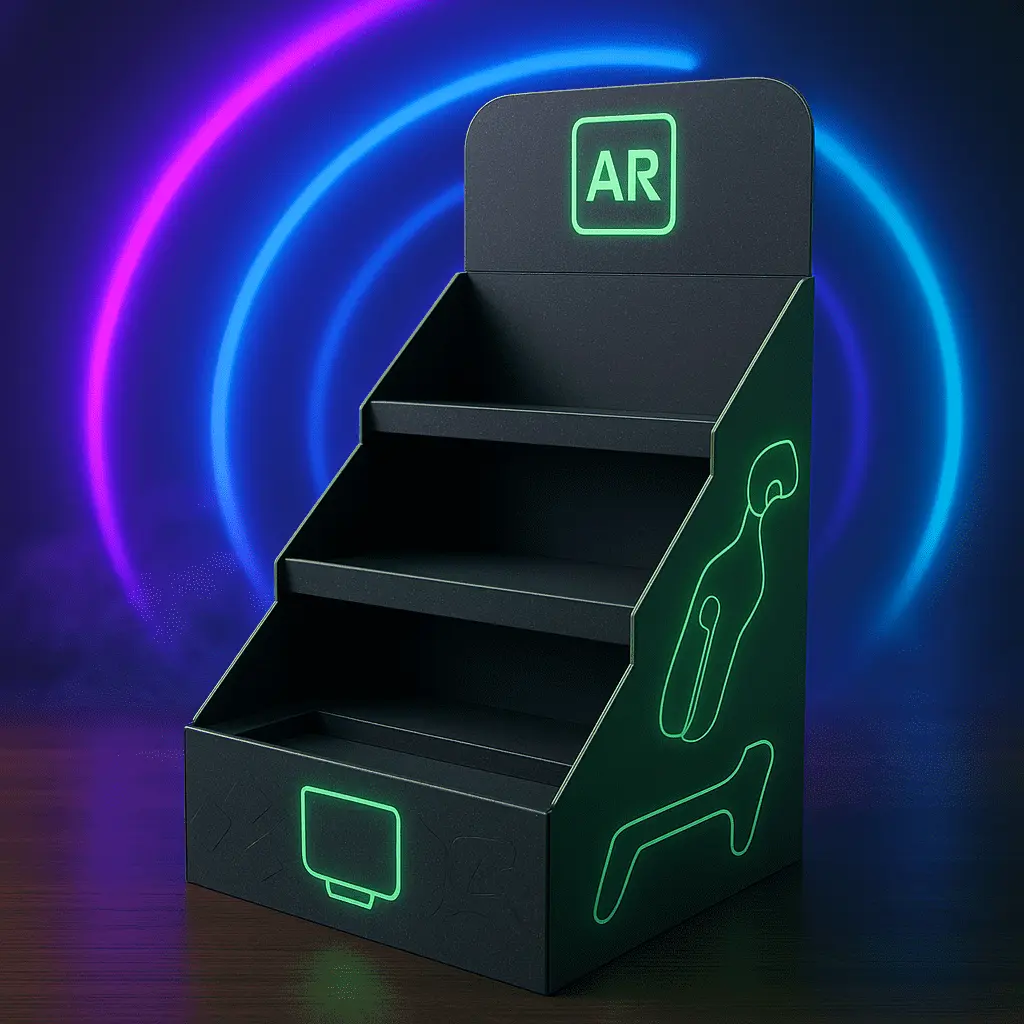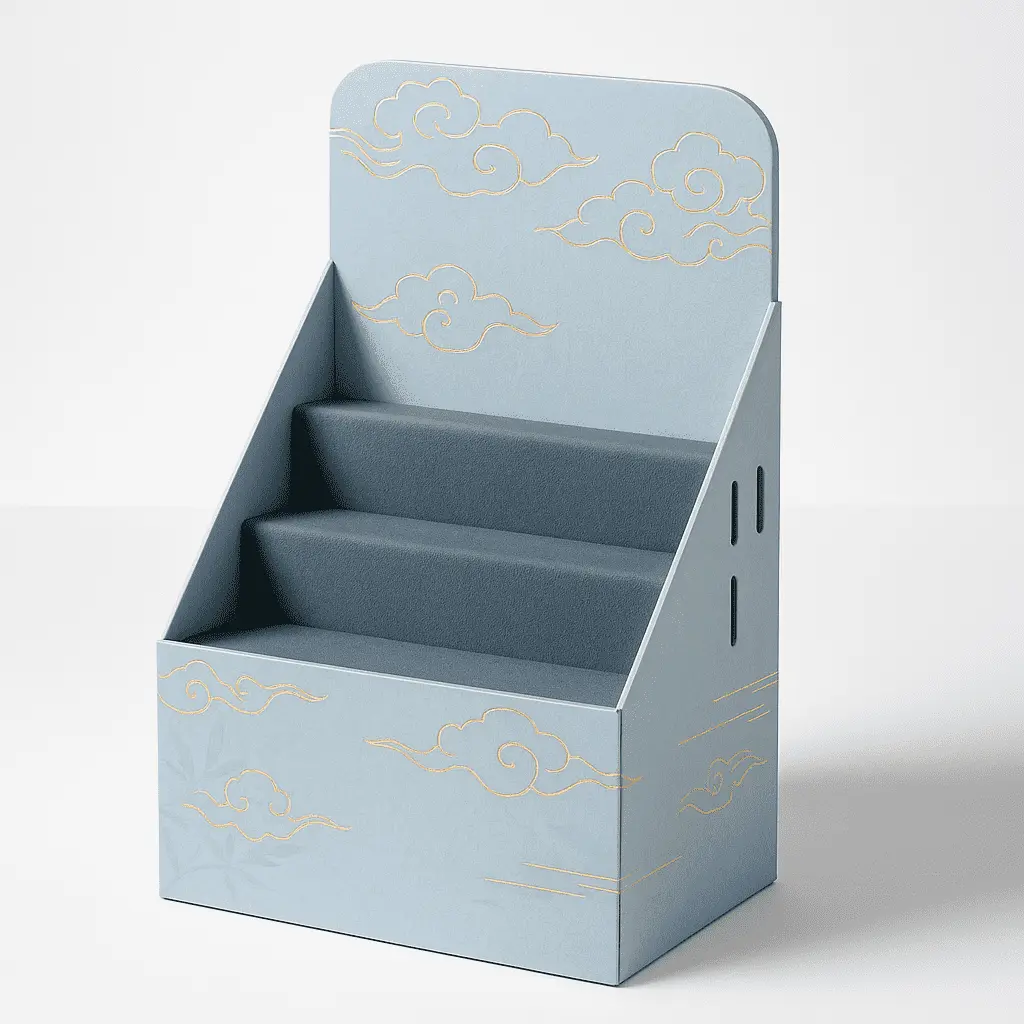Key Elements of Effective PDQ Displays
Visual Appeal and Brand Consistency
The visual appeal of a PDQ display is paramount in capturing shopper attention. Vibrant colors, high-quality graphics, and appealing product imagery can transform a simple cardboard structure into a powerful marketing tool. The design should align seamlessly with the brand's identity, reinforcing brand recognition and creating a cohesive shopping experience.
Innovative use of materials and textures can elevate a display's perceived value. For instance, incorporating glossy finishes or embossed elements can add a touch of luxury, even to budget-friendly products. The key is to create a display that not only catches the eye but also reflects the quality and essence of the products it showcases.
Moreover, the display should tell a story or convey a message that resonates with the target audience. This narrative approach can be achieved through clever use of imagery, taglines, or even the shape of the display itself. By creating an emotional connection, the display becomes more than just a product holder; it becomes a brand experience.
Strategic Placement and Size Considerations
The location of a PDQ display within a retail environment can significantly impact its effectiveness. High-traffic areas, such as near checkouts or at the end of aisles, are prime spots for maximizing visibility. However, the display's size and shape must be carefully considered to ensure it fits comfortably in these spaces without obstructing customer flow.
Scalability is another crucial factor. A well-designed PDQ display should be adaptable to various retail settings, from small convenience stores to large supermarkets. This flexibility allows for wider distribution and consistent brand presentation across different retail channels.
Additionally, the height and accessibility of products within the display play a role in its success. Items should be placed at eye level or within easy reach to encourage interaction. For displays targeting specific demographics, such as children's products, adjusting the height accordingly can significantly boost engagement and sales.
Functionality and Product Accessibility
While aesthetics are important, the functionality of a PDQ display is equally crucial. The design should facilitate easy access to products, allowing customers to pick up items without struggle. This ease of access not only improves the shopping experience but also reduces the likelihood of display damage from frustrated customers.
Inventory management is another key consideration. The display should allow for quick and easy restocking, minimizing downtime and ensuring products are always available. Some innovative designs incorporate modular components or refillable trays that can be swapped out efficiently.
Durability is also a critical factor, especially for displays intended for long-term use. The materials and construction should withstand the rigors of a retail environment, including frequent customer interactions and potential impacts from shopping carts or cleaning equipment.
Designing for Maximum Impact and Sales Conversion
Psychological Triggers in Display Design
Effective PDQ displays leverage psychological principles to influence purchasing decisions. Color psychology plays a significant role; for instance, red can create a sense of urgency, while green might be used for eco-friendly products. The arrangement of products can also trigger psychological responses, with eye-level placement typically receiving the most attention.
Scarcity and exclusivity are powerful motivators. Displays that convey limited availability or special offers can create a sense of urgency, prompting quicker purchase decisions. This can be achieved through design elements like "limited time offer" banners or showcasing a dwindling stock of popular items.
Social proof is another potent tool. Incorporating elements that suggest popularity or endorsement, such as "best-seller" tags or customer testimonials, can significantly influence buyer behavior. These cues tap into the human tendency to follow the crowd, especially when making quick decisions in a retail environment.
Interactive and Sensory Elements
Engaging multiple senses can dramatically increase the effectiveness of a PDQ display. Touch screens or physical interaction points invite customers to engage with the product or brand, creating a memorable experience. For food or beverage products, incorporating scent marketing techniques can be particularly powerful in triggering cravings and impulse purchases.
Digital integration is becoming increasingly common in modern PDQ displays. QR codes linking to product videos, augmented reality experiences, or social media campaigns can extend the engagement beyond the physical display. This not only provides additional product information but also creates a bridge between in-store and online shopping experiences.
Sound, when used appropriately, can also enhance the impact of a display. Subtle audio cues or product demonstrations can draw attention and create an immersive brand experience. However, it's crucial to use audio elements judiciously to avoid overwhelming or annoying customers.
Data-Driven Design and Optimization
The most successful PDQ displays are often the result of rigorous testing and optimization. A/B testing different designs, layouts, and messaging can provide valuable insights into what resonates most with target consumers. This data-driven approach allows for continuous improvement and adaptation to changing consumer preferences.
Analytics from integrated digital elements can offer real-time feedback on customer interactions. This data can inform not only future display designs but also broader marketing and product development strategies. For instance, tracking which products are most frequently picked up or which information customers engage with can guide inventory decisions and marketing messaging.
Moreover, leveraging customer data and market trends can help in creating personalized or localized display variations. This tailored approach ensures that the display remains relevant and effective across different demographics or geographical locations.
Sustainability and Innovation in PDQ Display Design
Eco-Friendly Materials and Practices
As environmental consciousness grows among consumers, incorporating sustainability into PDQ display design becomes increasingly important. Using recyclable or biodegradable materials not only appeals to eco-conscious shoppers but also aligns with many retailers' sustainability goals. Innovative materials like recycled plastics, bamboo, or even agricultural waste products are being explored as alternatives to traditional display materials.
The lifecycle of the display should be considered from design to disposal. Modular designs that allow for easy disassembly and recycling can significantly reduce environmental impact. Some forward-thinking brands are even exploring rental or reusable display programs, further minimizing waste.
Communicating these sustainability efforts through the display itself can be a powerful marketing tool. Clear labeling of eco-friendly materials or information about the brand's environmental initiatives can influence purchasing decisions, especially among environmentally conscious consumers.
Technological Integration for Enhanced Engagement
The integration of technology into PDQ displays is opening new avenues for customer engagement and data collection. Near Field Communication (NFC) tags or Bluetooth beacons can provide personalized content to shoppers' smartphones, offering product information, reviews, or special offers. This not only enhances the shopping experience but also provides valuable data on customer behavior and preferences.
Artificial Intelligence (AI) and machine learning are being utilized to create dynamic displays that adapt to customer interactions. For example, displays equipped with cameras and AI can analyze shopper demographics and adjust digital content in real-time to appeal to the current audience.
Virtual and augmented reality technologies are pushing the boundaries of what's possible in PDQ displays. These technologies can create immersive product demonstrations or allow customers to visualize products in use, significantly enhancing the shopping experience and influencing purchase decisions.
Adaptive Designs for Omnichannel Retail
As the lines between online and offline retail continue to blur, PDQ displays are evolving to support omnichannel strategies. QR codes or NFC tags can link physical displays to online stores, allowing customers to easily purchase products that may be out of stock in-store or access additional product variants.
Some innovative displays are being designed to double as fulfillment centers for online orders. These "dark store" displays can be used for in-store marketing during business hours and transformed into mini-warehouses for online order picking during off-hours, maximizing the use of retail space.
The future of PDQ displays may also include integration with smart home devices. Displays could potentially communicate with customers' smart assistants, reminding them of products they've interacted with in-store or suggesting replenishment of frequently purchased items.
Conclusion
Creating a great PDQ display for point-of-sale marketing is a multifaceted process that combines art, science, and strategy. The most effective displays balance visual appeal with functionality, leverage psychological triggers, and embrace innovative technologies. They are designed with sustainability in mind and adapt to the evolving landscape of omnichannel retail. By focusing on these key elements, brands can create PDQ displays that not only catch the eye but also drive sales, enhance brand perception, and provide valuable customer insights. As retail continues to evolve, so too will the design and functionality of PDQ displays, offering exciting opportunities for brands to connect with consumers at the crucial point of purchase.
FAQs
1. How often should PDQ displays be updated or refreshed?
The frequency of updates depends on factors like product lifecycle, seasonality, and campaign duration. Generally, refreshing displays every 4-6 weeks keeps content current and engaging.
2. Can PDQ displays be effective for high-end or luxury products?
Yes, when designed with premium materials and sophisticated branding, PDQ displays can effectively showcase luxury items, creating a high-end shopping experience within a broader retail environment.
3. What are the key metrics for measuring PDQ display success?
Important metrics include sales lift, customer engagement rate, dwell time at the display, and inventory turnover. Digital displays can also track metrics like interaction rates and content views.
Custom PDQ Displays for Effective Point-of-Sale Marketing | Fetching Printing
At Fetching Printing, we specialize in creating custom PDQ displays that elevate your point-of-sale marketing strategy. Our experienced team of packaging engineers and designers work closely with clients to develop innovative, eye-catching displays that drive sales and enhance brand visibility. As a leading manufacturer and supplier in the packaging industry, we offer tailored solutions to meet your specific needs. Contact us at support@fetchingprinting.com to learn how we can boost your retail presence with our expert PDQ display solutions.
References
Smith, J. (2022). The Psychology of Retail Displays: Influencing Consumer Behavior at the Point of Purchase. Journal of Retail Marketing, 45(3), 112-128.
Johnson, A., & Brown, L. (2021). Sustainable Materials in Point-of-Sale Displays: A Case Study Analysis. International Journal of Retail & Distribution Management, 49(2), 234-250.
Lee, S. (2023). Digital Integration in PDQ Displays: Enhancing Customer Engagement and Data Collection. Retail Technology Review, 18(4), 56-72.
Garcia, M., & Taylor, R. (2022). The Impact of Visual Merchandising on Consumer Purchase Decisions. Journal of Consumer Behavior, 31(1), 78-95.
Wong, K. (2023). Omnichannel Retailing: Bridging the Gap Between Online and Offline with Innovative Display Solutions. E-Commerce Research and Applications, 52, 101-117.
Patel, N., & Thompson, E. (2021). Measuring ROI in Point-of-Sale Marketing: Metrics and Methods for PDQ Display Evaluation. International Journal of Retail & Distribution Management, 50(3), 345-361.





